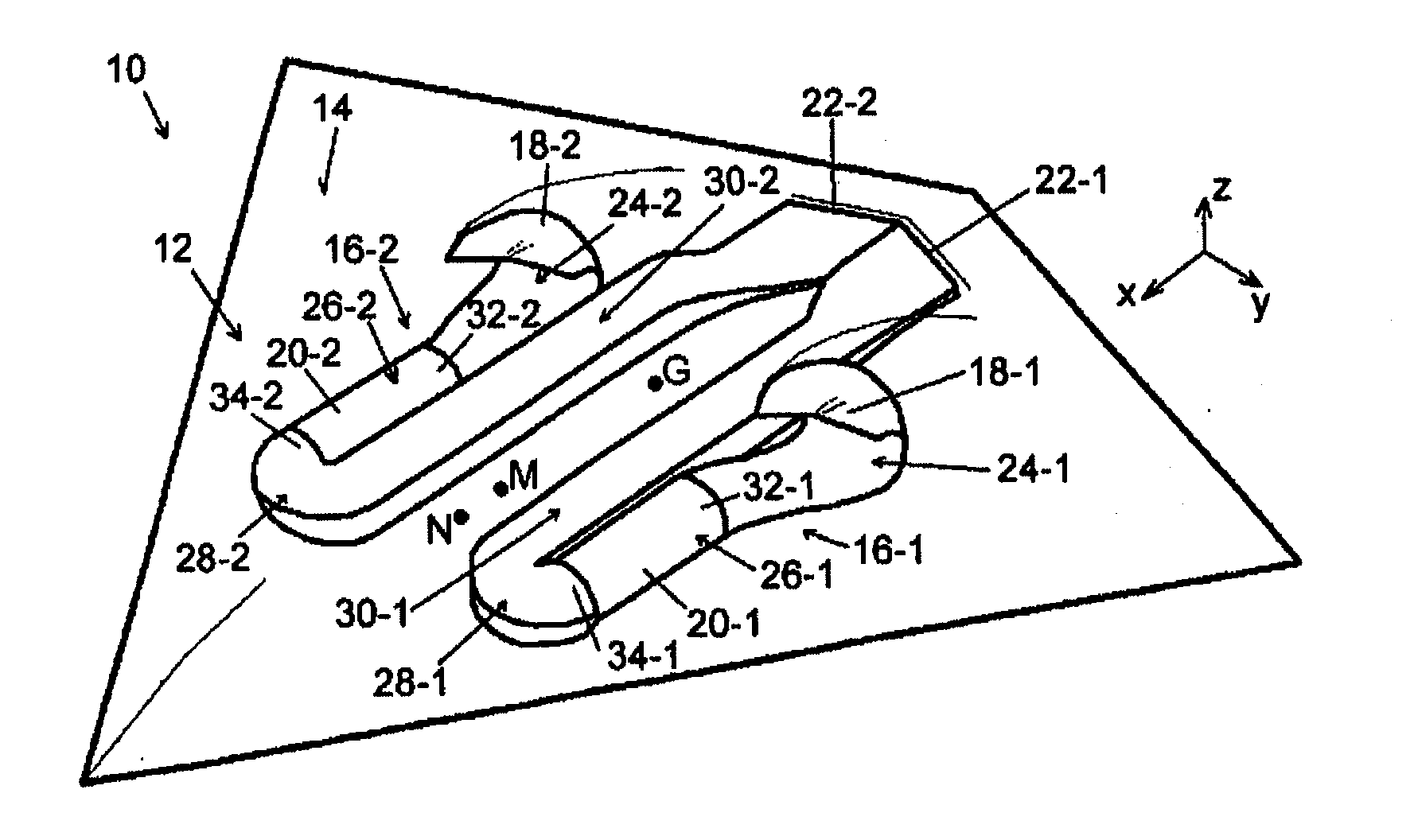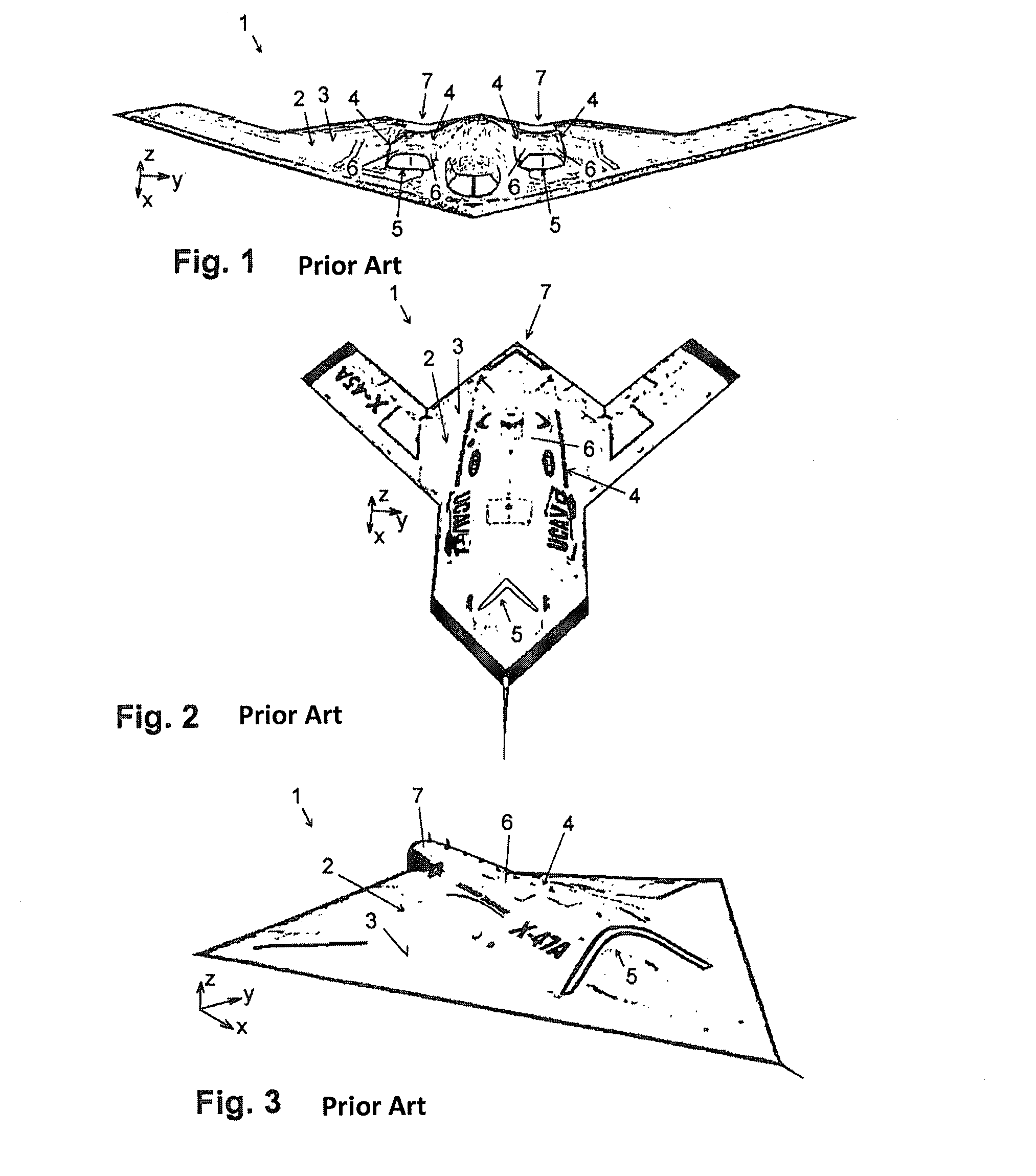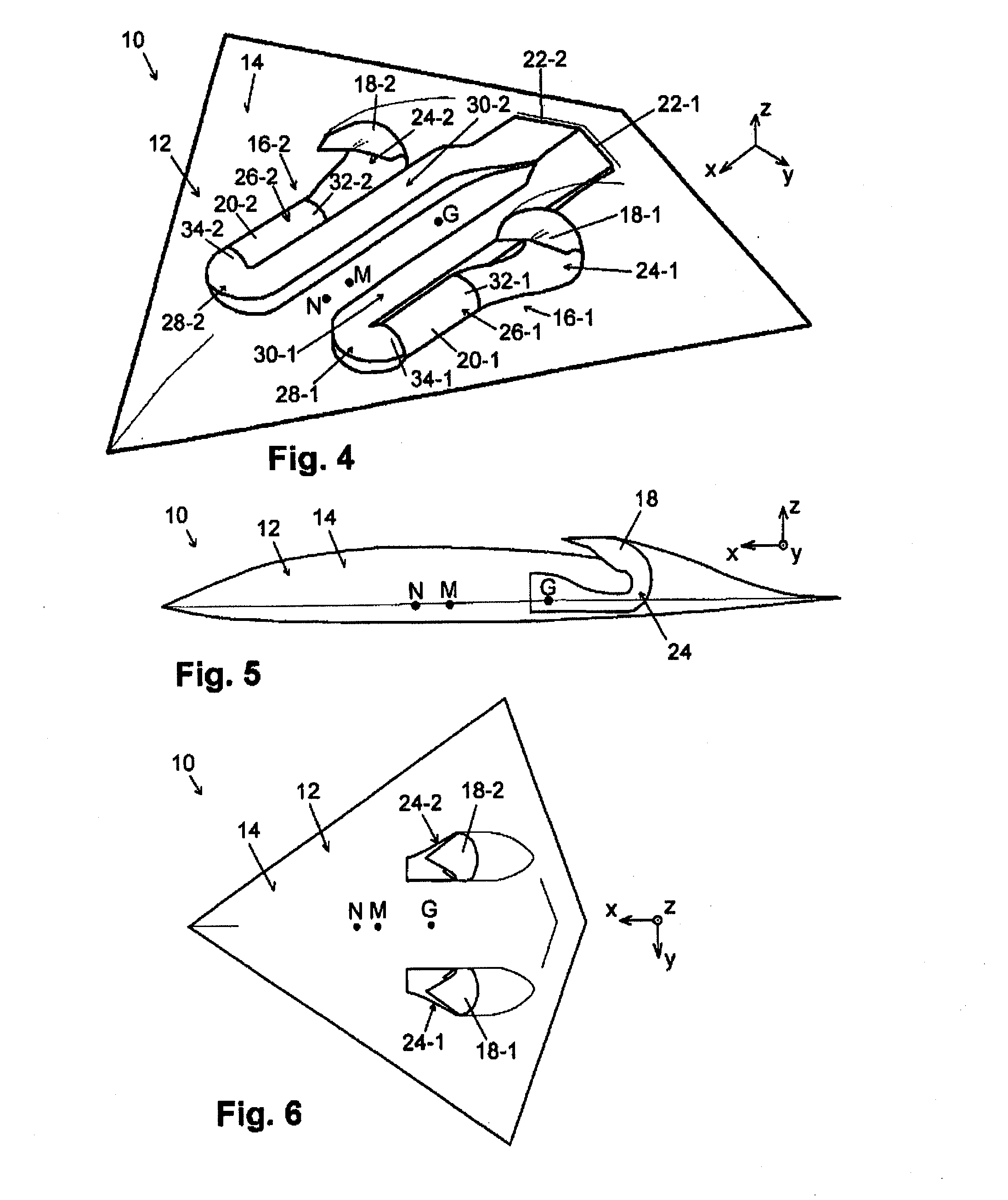Driven Aircraft, in Particular to an Aircraft Designed as a Flying Wing and/or Having a Low Radar Signature
a technology of flying wings and aircraft, applied in the field of driven aircraft, can solve the problems of aerodynamic instability, gravely impaired flight properties, and inability to achieve extreme low signatures, and achieve the effects of improving flight properties, high flow resistance, and high engine capacity
- Summary
- Abstract
- Description
- Claims
- Application Information
AI Technical Summary
Benefits of technology
Problems solved by technology
Method used
Image
Examples
Embodiment Construction
[0050]FIGS. 1 through 3 show some examples of aircraft known from the prior art of the type of interest here.
[0051]Each of these aircraft 1 comprises a fuselage and wing body 2 with a body surface 3. Furthermore, each aircraft 1 comprises at least one drive flow passage 4, which runs from an air inlet 5 directed forwards (positive x direction) on the body surface 3 via a jet engine 6 through the body 2 to a jet nozzle 7 opening to the rear on the body surface 3.
[0052]As can be seen from FIGS. 1 through 3, the body 2 is respectively embodied in the manner of a “flying wing aircraft”—with flowing transitions between a hardly discernible fuselage and wings arranged on both sides thereof. This particular design of the body 2 is used for a more or less drastic reduction of the radar signature of the respective aircraft 1. In this context the unusual leading edge sweep and trailing edge sweep or a W-shaped serration of the trailing edge (FIGS. 1 and 2) are also of importance. Thus, radar ...
PUM
 Login to View More
Login to View More Abstract
Description
Claims
Application Information
 Login to View More
Login to View More - R&D
- Intellectual Property
- Life Sciences
- Materials
- Tech Scout
- Unparalleled Data Quality
- Higher Quality Content
- 60% Fewer Hallucinations
Browse by: Latest US Patents, China's latest patents, Technical Efficacy Thesaurus, Application Domain, Technology Topic, Popular Technical Reports.
© 2025 PatSnap. All rights reserved.Legal|Privacy policy|Modern Slavery Act Transparency Statement|Sitemap|About US| Contact US: help@patsnap.com



